An object from the Pacific recently came to the conservation lab at McKay Lodge Conservation Laboratory for treatment, a 20th century tapa cloth from Polynesia. Tapa is a barkcloth made from macerated fibers from the inner bark of a tree or plant which are formed into a sheet. Barkcloth is found in many different cultures around the world. Tapa is the Polynesian word for this type of object.
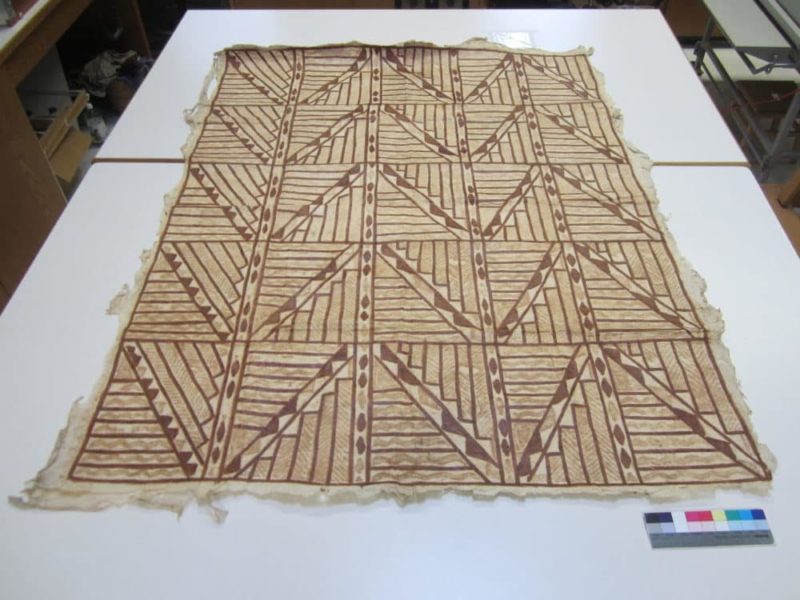
Tapa cloth is a natural material that can be made into stunning garments, just ask Pintrest, or simply beautiful to display on its own. While you can read more about tapa here or click the link to learn more about a current Pacific tapa research project, this blog refers to the conservation treatment of the tapa cloth brought to the McKay Lodge Conservation Laboratory just outside of Cleveland, Ohio. It is a large sheet, approximately 60 inches by 70 inches in size, though some tapa is far larger. This tapa features a bold, repeating geometric design. It is likely from the mid 20th century, and somewhere along the way it was folded and stored in a chest for several decades.
Since this tapa is an organic handmade object decorated with what appears to be natural colorants, it is highly susceptible to agents of deterioration such as dirt, light, moisture, insects, and physical damage. Dirt and debris can readily embed into the substrate and be difficult to remove. Exposure to high energy light can cause cumulative and irreversible damage, leading to weakened fibers, discoloration, or fading. The natural materials can also attract insects. Too much moisture in the air, or high relative humidity (RH), can lead to mold growth, while too little, can cause the substrate to become brittle. Improper storage or display can also lead to physical damage of the object.

While folding the tapa for so long did create some permanent creasing, the object is in otherwise good condition. During the conservation assessment of the Polynesian tapa by Sculpture and Objects Conservator Christina L. Simms, the substrate was found to be free of soiling and there was no evidence of insect damage. Some general discoloration likely from age was noted, but the fibers were pliable overall. Some delaminations were seen around the edges of the tapa and throughout it.
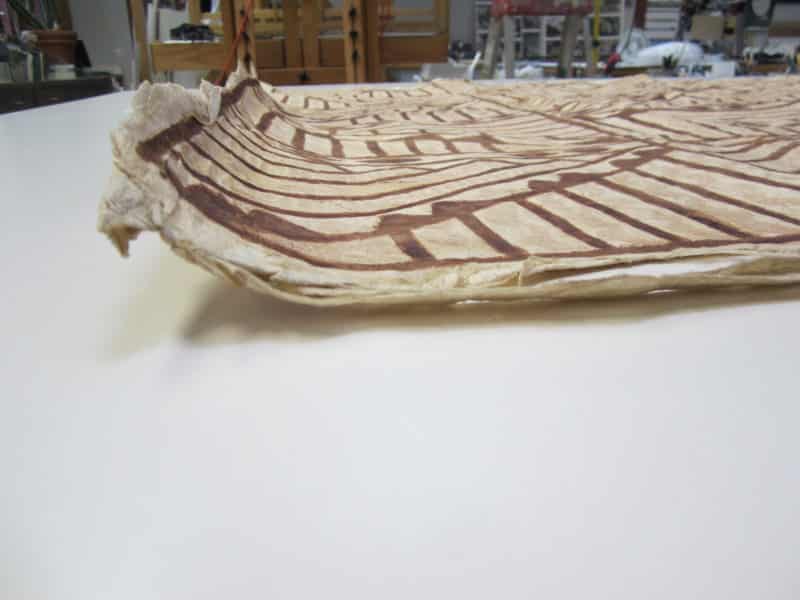
One corner showed evidence of tape that was used to secure delaminated areas together. Delamination and some creasing is not an atypical condition issue since the cloth is manufactured by beating together strips of bark. The primary condition issue, however, was related to how the piece was stored: folded many times and stored in a chest. This might have saved the object from some agents of deterioration, but it did lead to strong fold lines.
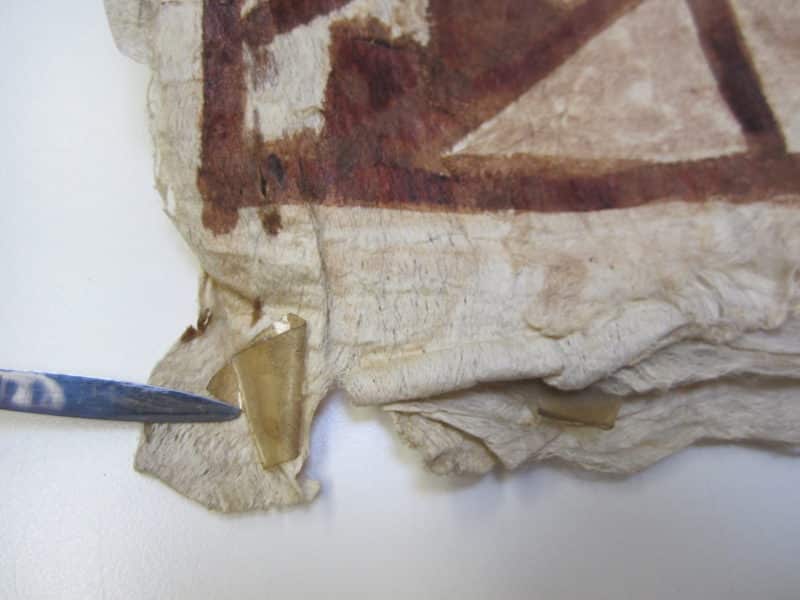
Despite its good condition, the conservation treatment of tapa could still be a challenge for Conservator Simms. In order to mitigate the creases and help flatten the object, moisture would need to be introduced into the fibers. This is difficult if the colorants in the design are water soluble. A solubility test was therefore conducted.
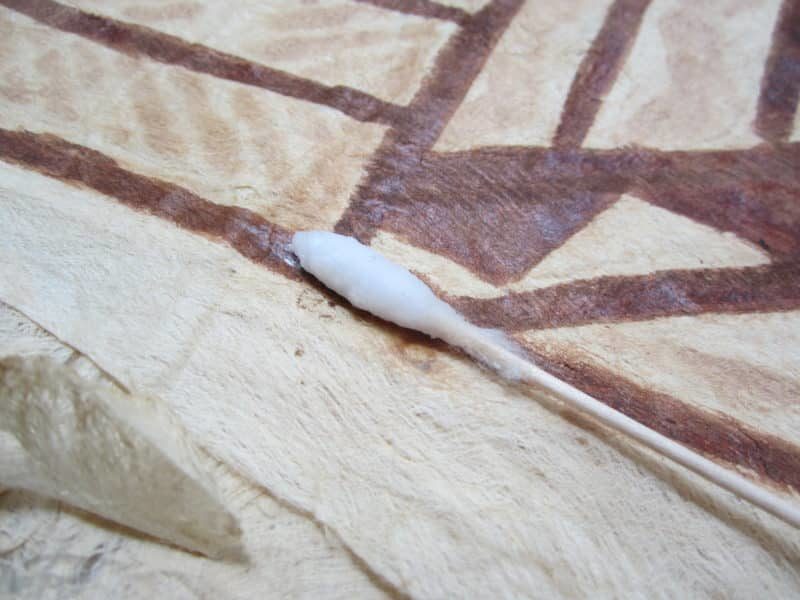
Using a moistened cotton swab, the swab was rolled over an inconspicuous area of the tapa for approximately 30 seconds. When the colorant did not transfer to the swab, this process was repeated again, but with more time. Other areas were tested in the same manner, before it was determined the colorants could withstand moisture; therefore, a humidification and flattening conservation treatment of the tapa was safe and possible.
For the conservation treatment of the tapa cloth, the object was laid onto a clean, flat table. Moisture was then locally applied to the crumpled edges as well as creases and folds then put underweight. This process was repeated until gradually the appearance of the folds and creases were reduced. In order to further reduce the fold impressions, an overall humidification and flattening process was used.

The next step was to treat the delaminations. Methyl cellulose adhesive, an adhesive often used for paper conservation, was applied by brush to delaminated areas. These areas were put underweight until dry. The repairs are fragile, but they can be reversed in the future if needed with no adverse impact on the object.
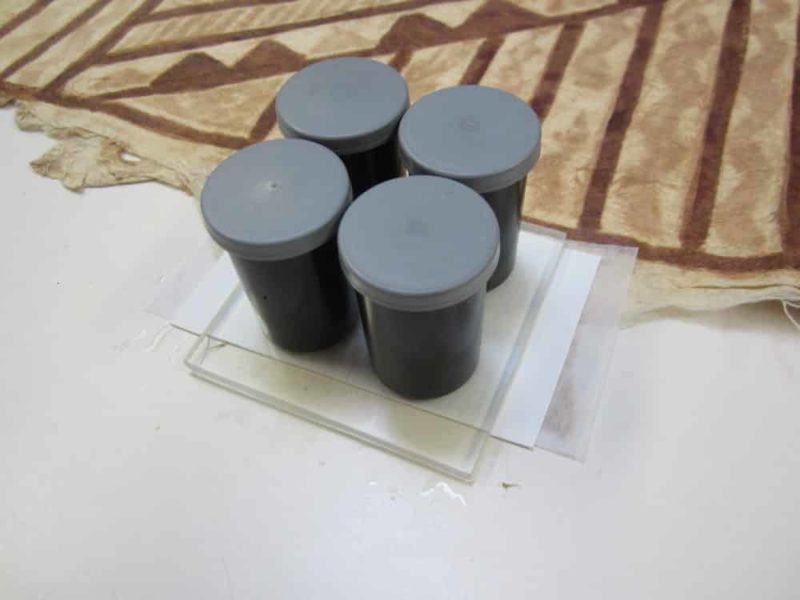
The natural fiber substrate will still respond by expanding and contracting to environmental fluctuations despite treatment, and though there is some permanent damage to the fibers from storage, the strong fold lines have been significantly diminished in appearance.
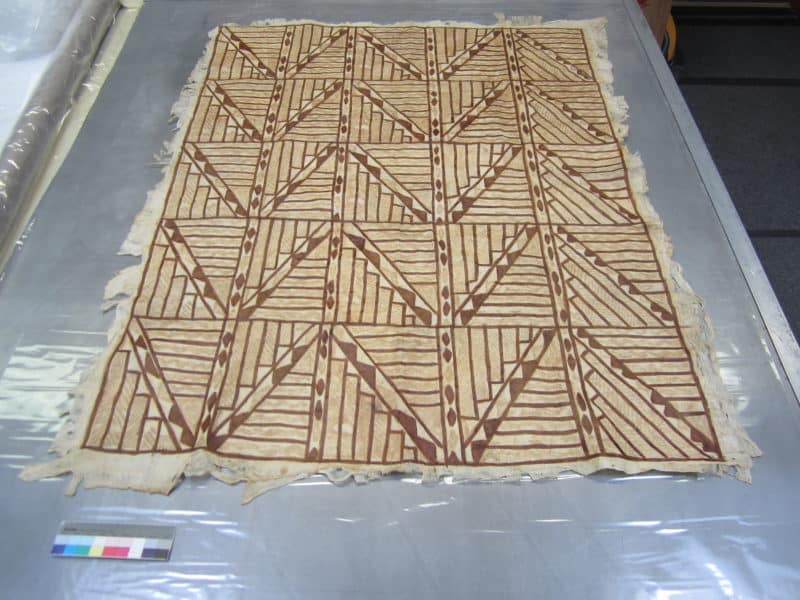
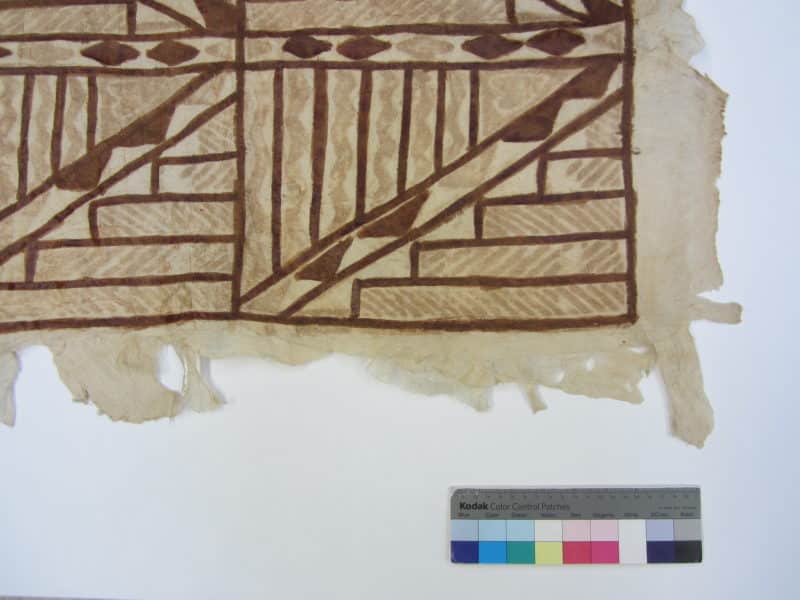
Flat or rolled storage is ideal for this object. After treatment, the tapa was rolled onto a cardboard tube, which had been covered with polyethylene sheet to avoid transfer of acidic materials, then returned to the client.
